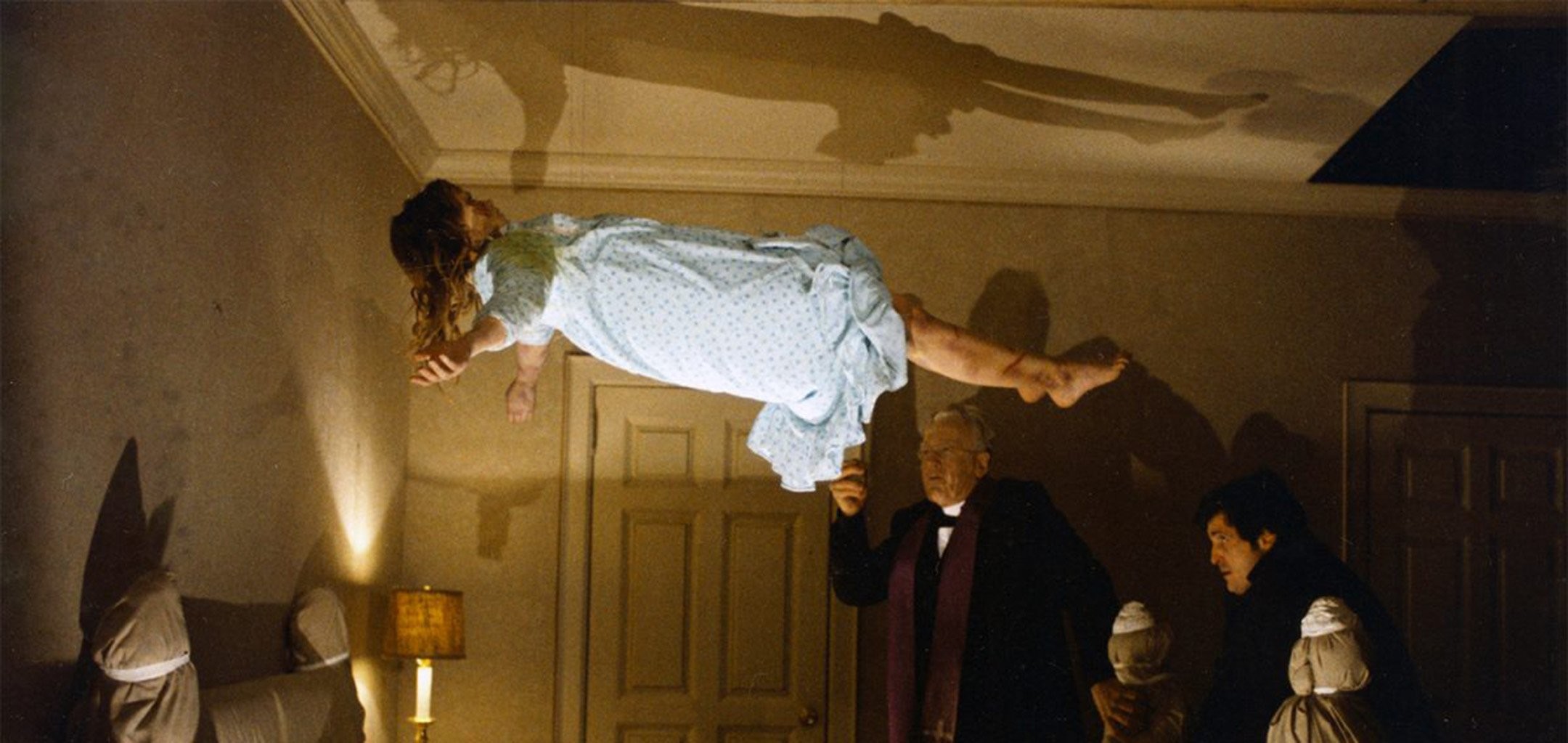The Exorcist (1973)

“The Exorcist,” directed by William Friedkin and released in 1973, is widely regarded as one of the most influential and terrifying horror films ever made. Adapted from William Peter Blatty’s novel of the same name, the film not only redefined the horror genre but also became a cultural touchstone that continues to resonate with audiences today. Its enduring impact is a testament to its masterful storytelling, unsettling atmosphere, and exploration of profound themes related to faith, fear, and the human condition.
At the heart of “The Exorcist” is the harrowing story of Regan MacNeil, a 12-year-old girl who becomes possessed by a demonic entity. The narrative begins with a routine, albeit unsettling, series of events that gradually escalate into a full-blown supernatural crisis. Regan’s possession manifests through disturbing physical and psychological symptoms, including violent outbursts, blasphemous language, and a grotesque transformation. Her mother, Chris MacNeil, a successful actress, is initially bewildered and desperate to find medical explanations for her daughter’s condition. However, as traditional medicine fails to provide relief, she turns to the church for help.
The film introduces Father Merrin, an experienced exorcist, and Father Karras, a Jesuit priest struggling with his own crisis of faith. The story culminates in a dramatic and intense exorcism performed in the MacNeil home, a sequence that is both iconic and deeply unsettling. The climactic confrontation between the forces of good and evil explores themes of redemption, sacrifice, and the limits of human endurance.

One of the most striking aspects of “The Exorcist” is its use of cinematic techniques to create an atmosphere of dread and unease. Friedkin’s direction is characterized by a restrained and realistic approach, avoiding excessive gore or sensationalism in favor of a more psychological and atmospheric horror. The film’s pacing is deliberate, allowing tension to build gradually and envelop the viewer in a sense of foreboding.
The cinematography, by Owen Roizman, plays a crucial role in establishing the film’s eerie mood. The use of shadow, dim lighting, and stark contrasts heightens the sense of isolation and fear. The iconic image of Regan’s head turning 360 degrees, while achieved through groundbreaking special effects and makeup, is a testament to the film’s commitment to creating a visceral and lasting impact.
“The Exorcist” delves into profound themes that go beyond the realm of horror. At its core, the film explores the nature of evil and the power of faith. The character of Father Karras grapples with his own doubts and personal demons, making his eventual act of self-sacrifice a powerful moment of redemption. The film raises questions about the existence of God, the nature of evil, and the limits of human understanding, challenging viewers to confront their own beliefs and fears.

The film’s impact on popular culture is immense. It introduced a new level of sophistication to the horror genre, influencing countless films that followed. Its success also sparked a renewed interest in the themes of exorcism and demonic possession in cinema and literature. The film’s legacy is reflected in its numerous accolades, including ten Academy Award nominations and two wins
Upon its release, “The Exorcist” generated significant controversy due to its graphic content and disturbing themes. Some viewers were shocked by the film’s depiction of violence and religious imagery, leading to heated debates about its appropriateness and impact. Despite—or perhaps because of—these controversies, the film garnered widespread acclaim from critics and audiences alike. It was praised for its innovative approach to horror, strong performances, and chilling atmosphere.

“The Exorcist” remains a seminal work in the horror genre, its influence extending far beyond its initial release. Its skillful blend of psychological and supernatural elements, combined with its exploration of deep philosophical and theological questions, ensures that it continues to captivate and terrify audiences. As both a cultural phenomenon and a landmark in film history, “The Exorcist” stands as a powerful reminder of the enduring power of storytelling to confront our deepest fears and beliefs.









